Deogyusan National Park (Main, Jeoksang Section) (덕유산국립공원 (본소,적상분소))
4.1 Km 26888 2024-04-07
159, Gucheondong 1-ro, Muju-gun, Jeonbuk-do
+82-63-322-3174
The area of Deogyusan National Park stretches out from the southern ridges of Sobaeksan Mountain, covering regions within four different counties in Gyeongsangnam-do and Jeollabuk-do. The park is nestled in Deogyusan Mountain, Korea's 4th tallest mountain with the summit reaching an elevation of 1,614 meters. The mountain is blessed with a 36-kilometer valley dotted with several scenic points, ponds, and waterfalls.
The mountain contains prestigious cultural heritages, such as Jeoksangsanseong Fortress (Historic Site No. 146) and the Hanging Painting of Anguksa Temple (Treasure No. 1267) to name a few. It is also home to diverse wildlife animals and plants. The mountain's beauty can be enjoyed all year round, with royal azaleas in spring, a colony of daylilies in summer, colorful autumn foliage in fall, and a white snowy mountain vista in winter.
Muju Gucheong-dong Special Tourist Zone (무주구천동관광특구)
4.1 Km 19625 2024-04-07
Seolcheon-myeon, Muju-gun, Jeonbuk-do
+82-63-320-2114
At the heart of the Muju Gucheondong Special Tourist Zone is Muju Gucheondong Valley. The outer parts of Deogyusan National Park and the mountain’s natural recreation forest are also part of the special tourist zone.
The 30-kilometer-long Muju Gucheondong Valley is located to the north of Deogyusan National Park. The calm and soothing sound of the water flowing through a lush forest make this a great summer destination. The 33 scenic points of Gucheondong include Eunguam Rock, Haksodae Falls, Waryongdam Pond, Gucheon Waterfall and Yeonhwa Waterfall. In the summer, visitors can see the
rare sight of fireflies in their natural habitat. The fall foliage in autumn and the winter snowscape are also quite exquisite.
Within the vicinity of Muju Gucheondong is Muju Resort. The resort complex is made up of a family hotel, resort condominium and various recreational facilities where visitors can enjoy skiing, hiking, horseback riding and mountain biking. Visitors can take the gondola from the resort all the way up to Deogyusan Mountain’s Seolcheonbong Peak (1,520 meters). From, there, they can easily reach the summit at Hyangjeokbong Peak (1,614 meters).
Taekwondowon, located near the Muju Gucheondong Special Tourist Zone, offers a hands-on Taekwondo experience program. Those who are interested in learning Taekwondo can take part in a 1-day program which includes a Taekwondo demonstration, a Taekwondo class (basic movements), and board breaking.
[Muju Gucheondong Special Tourist Zone]
Areas Covered: Mupung-myeon (Samgoe-ri) and Seolcheon-myeon (Samgong-ri and Simgok-ri) in Muju-gun, Jeollabuk-do
Area size: 7,610,000 ㎡
Tourist Attractions: Deogyusan National Park, 33 Scenic Views of Muju, Gucheondong Valley, Muju Resort, forest park, Taekwondowon, Muju Hyanggyo (Confucian school), Baengnyeonsa Temple, Jeoksansanseong Fortress, etc.
Hangukgwan (한국관)
4.2 Km 25178 2024-04-07
87, Gucheondong 1-ro, Seolcheon-myeon, Muju-gun, Jeonbuk-do
063-322-0891
Located in the food street of Gucheondonggyegok Valley, Hangukgwan is a local food restaurant with the signature dish pyogobeoseot gukbap (shiitake mushrooms and rice soup). They serve soups such as tojong nyakchae baeksuk (whole chicken soup with medicinal herbs), beoseot jeongol (mushroom hot pot), and dakdoritang (spicy braised chicken), and meals such as deodeokgui jeongsik (grilled deodeok set menu), sanchae bibimbap (wild vegetable bibimbap), and pyogobeoseot gukbap (shiitake mushrooms and rice soup). The meal is accompanied by nine different side dishes, all of which are based on fresh herbs.
Muju Baengnyeonsa Temple (백련사(무주))
4.5 Km 6589 2024-04-07
580, Baengnyeonsa-gil, Muju-gun, Jeonbuk-do
+82-63-322-3395
Baengnyeonsa Temple is located in the upper part of Gucheondong Valley on Deogyusan Mountain. It is said that during the Silla Kingdom, a white lotus flower bloomed here, and that's why the temple is called Baengnyeonsa (lit. White Lotus Temple). The temple is the only remaining temple out of 14 that were built in the Gucheon-dong area of Muju. After walking over Baengnyeongyo Bridge at the entrance of the temple, you will come to a stone stairway. At the top is the main sanctuary. The majesty and beauty of the main sanctuary is well complemented by the mountains. The Mokjosamjonbul Stone Buddha within the main building is presumed to have been built in the latter half of the Joseon dynasty. Past Myeongbujeon is Baengnyeonsa’s Sajeokbi tombstone, and the workmanship of the carved calligraphy is very highly regarded.
The Thirty Three Sights of Mujugucheondong Valley (무주 구천동 33경)
4.5 Km 101945 2024-04-07
580 Baengnyeonsa-gil, Seolcheon-myeon, Muju-gun, Jeonbuk-do
The Thirty Three Sights of Mujugucheondong Valley refers to thirty three scenic spots along the route from Seokmo Mountain's Rajetongmun Gateway to Baengnyeonsa Temple on Deogyusan Mountain. Visitors can witness spectacular rock formations and rare flora and fauna in the primeval forest. It's recommended to explore from the sight 1 Rajetongmun Gateway to the sight 14 Sugyeongdae Valley as a driving route, while exploring from the sight 15 Wolhatan Valley to the sight 33 Hyangjeokbong Peak as a trekking route.
MUJU Resortel [Korea Quality] / mujuresortel(무주리조텔) [한국관광 품질인증]
4.7 Km 1084 2024-04-07
878 , Gucheondong-ro, Muju-gun, Jeonbuk-do
+82-63-322-0770
Muju Resortel nestles among the mountains of Deogusan National Park, where the high altitude sharpens appreciation of the beautiful scenery, the quiet sounds of the valley and the clean freshness of the air. Rooms are modern in style and clean, with high-quality bedding for a comfortable sleep. Walkers and winter sports enthusiasts can enjoy a hearty breakfast here, while a Korean restaurant is available during non-breakfast hours.
Seolguk pension [Korea Quality] / 설국 [한국관광 품질인증]
4.8 Km 4047 2024-04-07
9-7 , Wonsamgong 2-gil, Muju-gun, Jeonbuk-do
+82-63-324-2220
Seolguk is a pension-type resort in Seolcheon-myeon, Muju-gun, Jeonbuk-do. The 3-story is built of wood and looks its best when it fits with nature in the snowy winter. The hotel well located for leisure sports as there is a ski resort 3 minutes away, as well as a nearby walking course with views of Deogyusan mountain. Most of the rooms are double-decker structures.
Chiryeongyegok Valley (칠연계곡)
6.4 Km 19500 2024-04-07
608, Chiryeon-ro, Muju-gun, Jeonbuk-do
+82-63-323-0577
Chiryeongyegok Valley is situated behind Tongan Village in Anseong-myeon near Deogyusan Mountain. While not as famous as the valley in Gucheon-dong, the valley boasts a beautiful array of waterfalls, oddly shaped rocks, and ponds. The best known attraction is Chiryeonpokpo Falls, meaning “seven falls connected to pools.” There, pure water flows gently, moving from one pool to the next.
Jeoksangsan Mountain (적상산)
6.8 Km 22250 2024-04-07
Goemok-ri, Muju-gun, Jeonbuk-do
+82-63-322-4174
As one of the best scenic mountains in Korea, Jeoksangsan Mountain (1,030.6 meters) showcases imposing, steep rock walls. Jeoksangsan, also called Red Skirt Mountain, got its name from the view of red maple trees around cliffs in fall that makes the mountain look like a giant red skirt. The mountain boasts a variety of attractions from Hyangnobong Peak (1,029 meters), Cheonilpokpo Falls, Songdaepokpo Falls, Jangdobawi Rock, Janggunbawi Rock, and Allyeomdae Cliff.
The rugged shape of the mountain was considered ideal for building a fortress. And after Jeoksangsan became a designated site for storing Joseonwangjo Sillok (annals of the Joseon Dynasty), the fortress surrounding it was further rebuilt. The mountain is also home to Anguksa Temple, an ancient temple built in 1227 (during the 3rd year of King Chungryeol’s reign) by Monk Wolin. The mountain can easily be climbed by hiking or by vehicle; there is a paved road stretching over 15 kilometers that leads to the top of the mountain thanks to the construction of Muju Power Plant, letting tourists visit Sanjeong Lake and Anguksa Temple conveniently.
Muju Anguksa Temple (안국사 (무주))
7.1 Km 13908 2024-04-07
1050, Sanseong-ro, Muju-gun, Jeonbuk-do
+82-63-322-6162
As the only temple in Jeoksangsan Mountain, Anguksa Temple was built in 1227 (during the 3rd year of King Chungryeol’s reign) by Monk Wolin. A secret historical archives, called Sagak, was built to store Joseonwangjo Sillok (annals of the Joseon dynasty) in 1614 (during the 6th year of King Gwanghaegun’s reign) within the mountain, while Seonukgak was built in 1641 (during the 19th year of King Injo’s reign) to store Seonwonrok (royal genealogical records). The two sites were designated as Jeoksangsan Historical Archives during the Joseon dynasty. Hoguksa Temple was also built at that time to prevent accidents from affecting the archives. The temple, along with the existing Anguksa Temple, was used to house monk soldiers who protected the archives.
Because of the construction of Muju Power Plant, Anguksa Temple was relocated to the Hoguksa Temple site and rebuilt in 1995. Consisting of 15 buildings, the temple is surrounded by Sanjeong Lake. Boasting exquisite fall foliage, the temple can be easily reached by vehicle along a paved road. The nearby attractions include Muju Resort and Muju Gucheondong Valley.
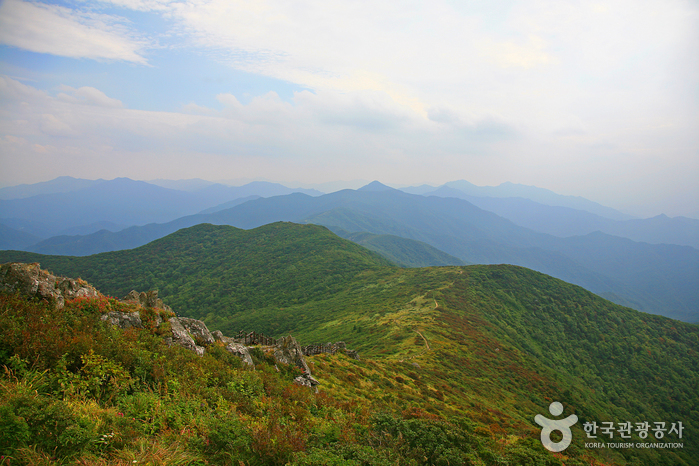
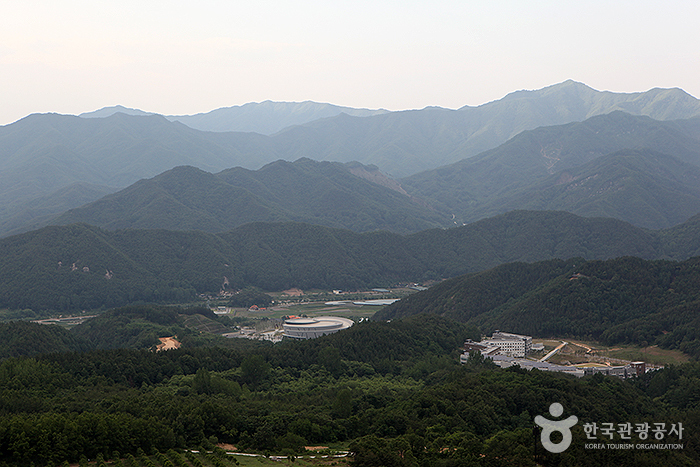

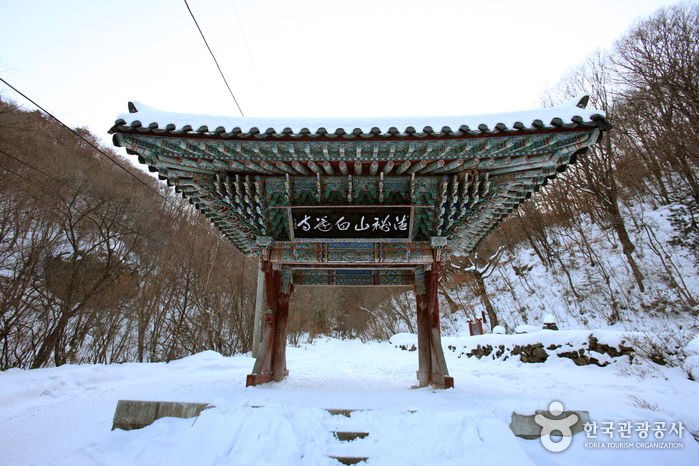
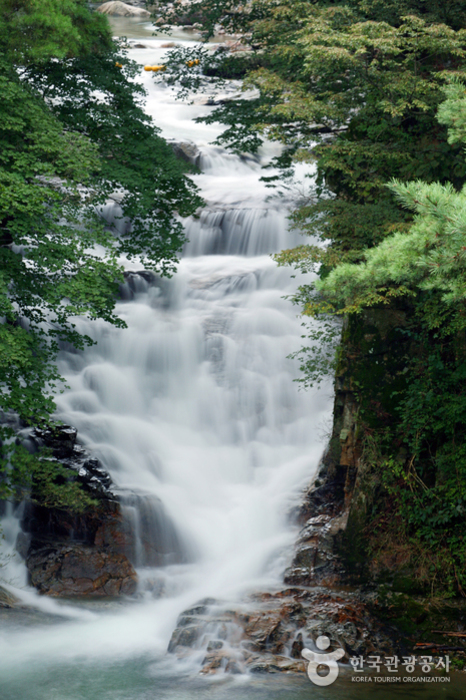
![MUJU Resortel [Korea Quality] / mujuresortel(무주리조텔) [한국관광 품질인증]](http://tong.visitkorea.or.kr/cms/resource/39/2576839_image2_1.jpg)
![Seolguk pension [Korea Quality] / 설국 [한국관광 품질인증]](http://tong.visitkorea.or.kr/cms/resource/30/2584930_image2_1.jpg)
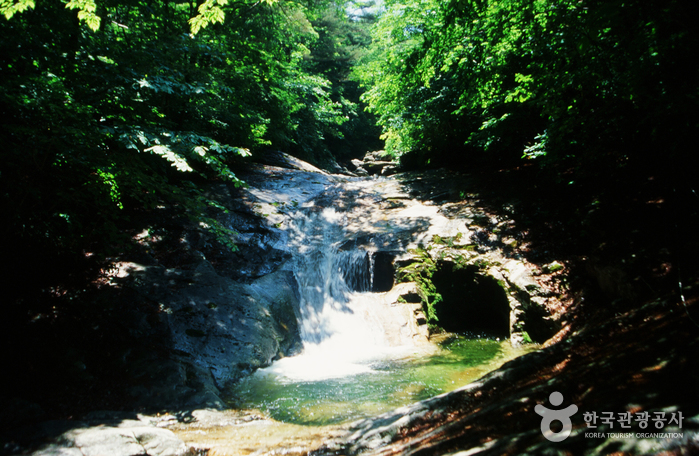
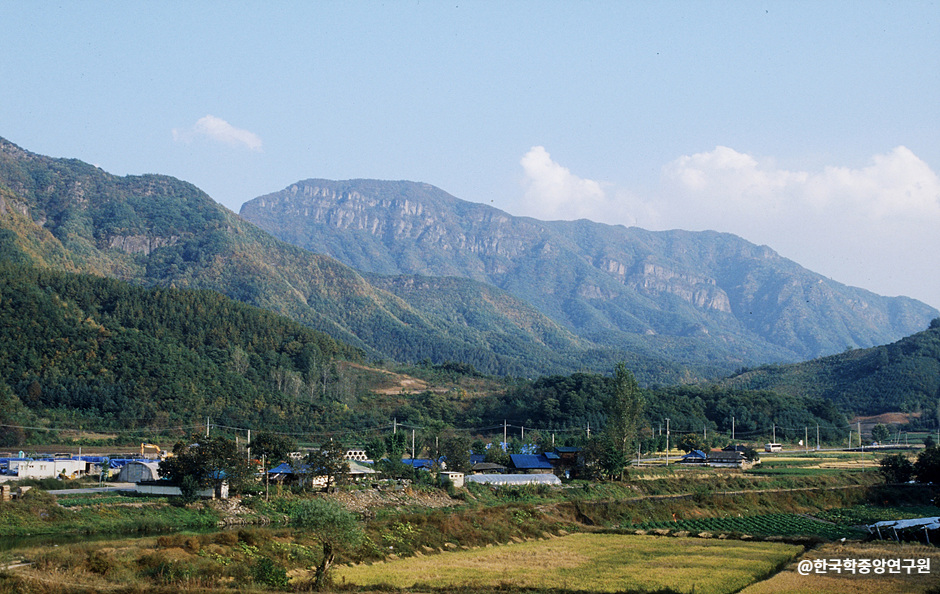
 English
English
 한국어
한국어 日本語
日本語 中文(简体)
中文(简体) Deutsch
Deutsch Français
Français Español
Español Русский
Русский